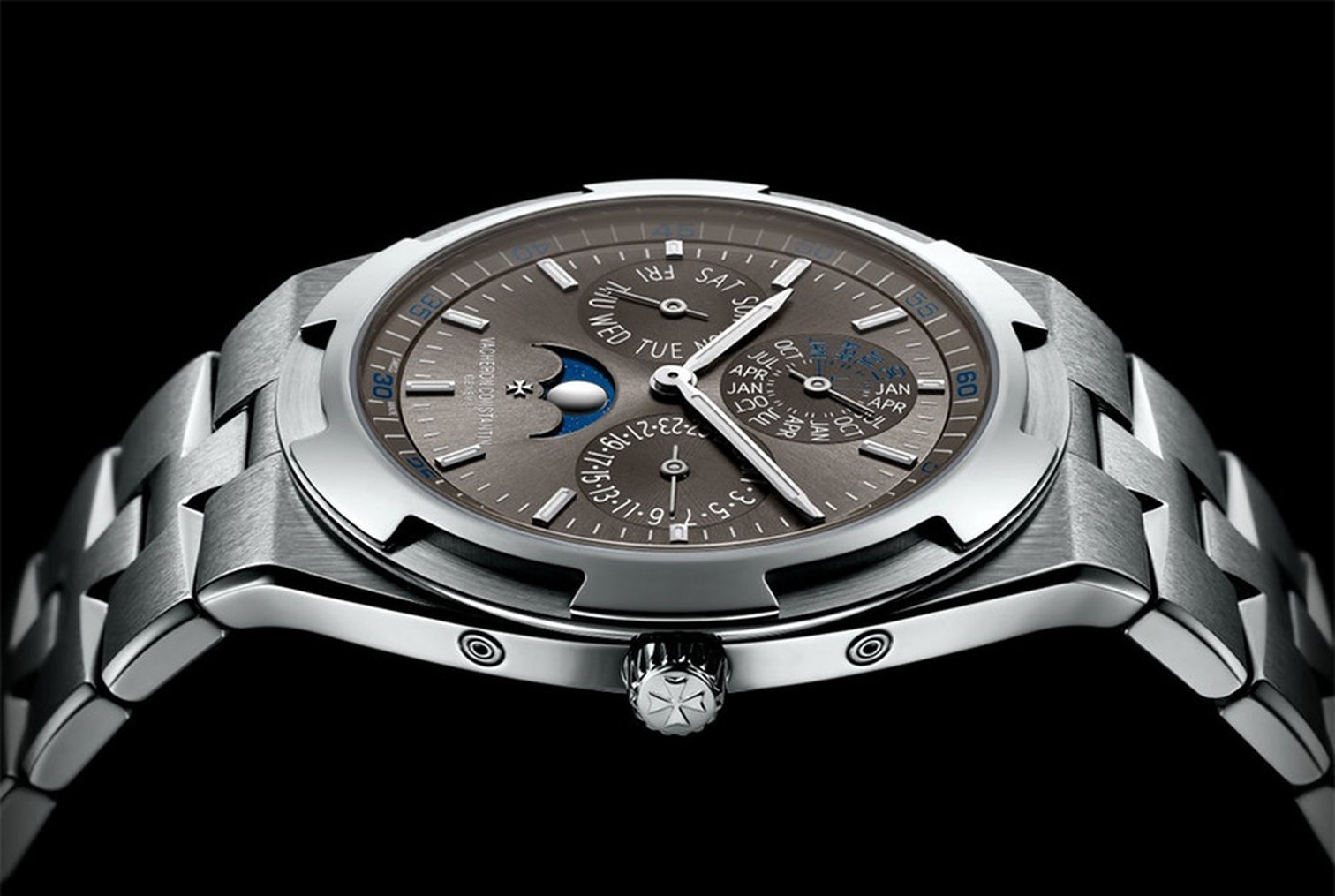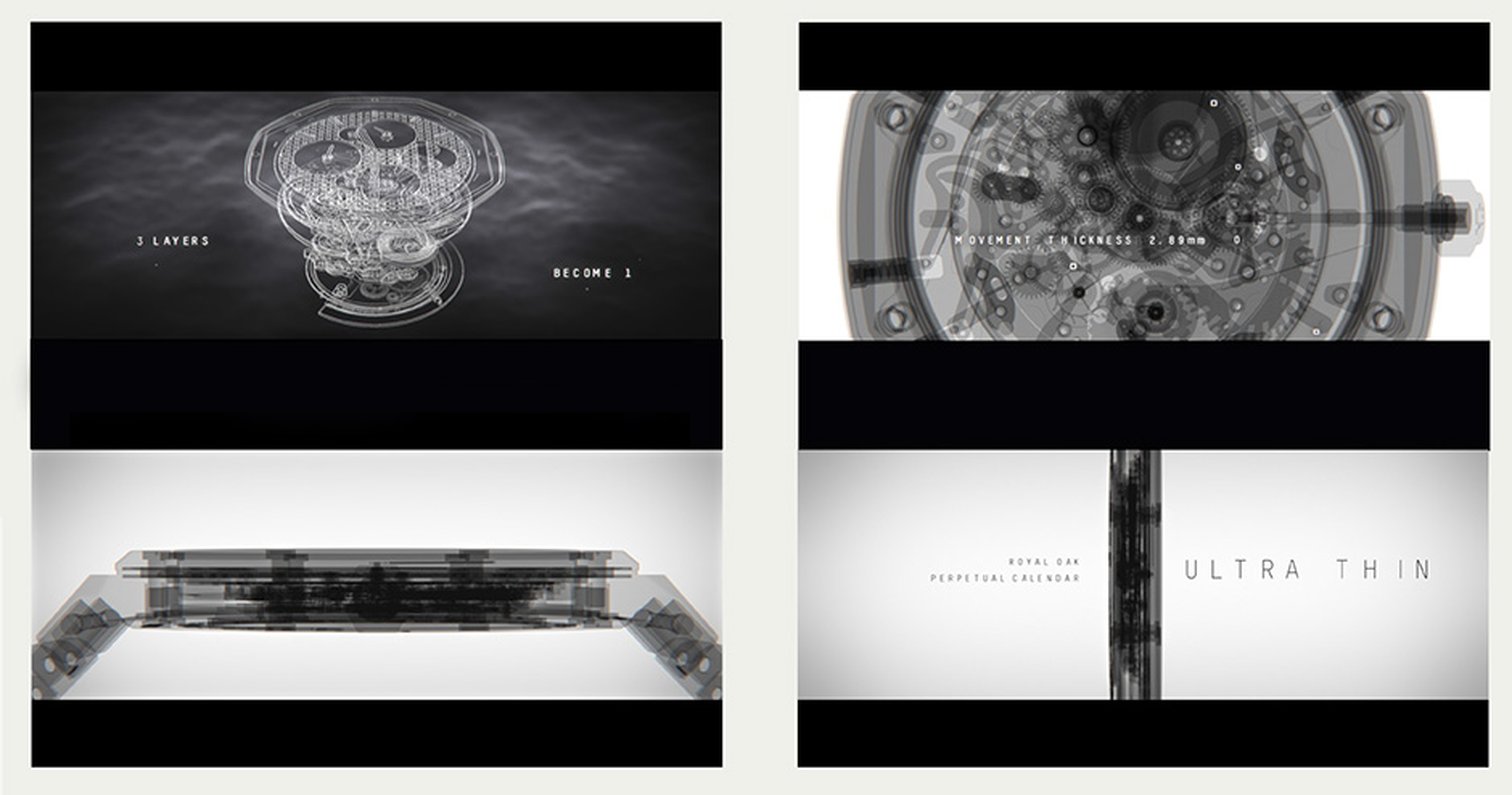
Here's how Audemars Piguet has created the thinnest self-winding perpetual calendar ever.
When we write about ultra-thin watchmaking, we tend to focus on the outright record-setters. The watches – predominantly from Piaget, Bulgari and Jaeger-LeCoultre – which stake a claim to new ground, albeit often by tiny margins, in the simplest expression of mechanical watchmaking: thinnest mechanical watch, or thinnest automatic watch.
There’s something fitting about that; the quest for ever slimmer movements and watches is bound up with simplicity, with the reduction of things to their most essential, so it feels right to be talking about watches concerned only with hours, minutes and maybe seconds.
Similarly, when we talk about Audemars Piguet concept watches, we have an image that comes readily to mind. The “stormtrooper” type of Royal Oak Offshore models, or the RD#1 Minute Repeater, dubbed the Supersonnerie.
Approaching Audemars Piguet’s second advanced concept watch is a bit confounding, then: here’s the silhouette of something we know intimately – the Royal Oak – with a familiar perpetual calendar dial that’s devoid of unusual registers or asymmetrical apertures. Concept? What concept?
It’s true that there hasn’t been much attention on slimmed-down highly complicated watches lately. That there haven’t been many is partly for the very obvious reason that they take a long time to do, but you also have to consider the demand. Only the top-tier complications (chronograph, minute repeater, perpetual calendar) really seem worthy of the ultra-slim treatment – no-one’s really looking out for the world’s thinnest worldtimer.

This watch took Audemars Piguet five years to develop, and despite appearances, it isn’t ready to go into full series production. The brand credits two patents with much of the “extreme diet” they have put the calibre on, but there are undoubtedly other areas of subtle improvement, shaving away microns of excess metal.
It claims the record for the world’s thinnest perpetual calendar movement and watch (sometimes an ultra-thin watch pips a rival to the post on one, but not the other), and it takes both titles by a margin that is, in the context, huge.
The movement measures 2.89mm from top to bottom, and the cased-up watch just 6.2mm. Its closest rivals can only manage figures of 3.88mm and 8.1mm. That is seriously thin: we are only 1.05mm thicker than a Bulgari Octo Finissimo Automatic and that does without the small matter of a perpetual calendar.
Or, to compare it another way, it is 1.9mm thinner than the time-only Royal Oak Jumbo Extra-Thin, which checks in at 8.1mm. This is a watch that you regard like a magician’s prop, turning it round and round, looking for the obvious trick that lets them fool you with the illusion.
You’ll look in vain, although to describe what Audemars Piguet has done to get here is, in some sense, to puncture the magic. Fundamentally, to make something smaller, you have to either do away with whole parts, shrink existing parts to the very limits of their tolerances, or invent new parts that do the same job in less space.

There has been a little of option one: here, the dial of the watch actually functions as the mainplate for the movement. We’ve seen a similar philosophical approach elsewhere, where the caseback does the job of mainplate, and the dial all but disappears – it’s how the Piaget 900P and 910P get their kicks – but never on a watch that has retained a traditional dial like this. But the main gains on this new perpetual calendar come elsewhere.
Thin movement, deep roots
A fundamental reason for the rarity of ultra-thin perpetual calendars is the modular construction of such movements. You take a time-only base calibre, and you bolt (ok, screw carefully…) a calendar module on top. You will only have a chance at making a record-breaking watch like this if your starting calibre is suitably thin, and digging into that a little more explains why it’s only certain brands who can compete here.
The new Audemars Piguet Royal Oak Concept RD#2 uses Calibre 5133. That’s a direct modification of Calibre 5134, the movement found in the standard Royal Oak Perpetual Calendar. That calibre is the result of putting a perpetual calendar module onto something that AP calls Calibre 2120.
Calibre 2120 was developed in the 1960s by Jaeger-LeCoultre, based on their Calibre 960. Never used in-house, this was an ebauche supplied to Audemars Piguet, Vacheron Constantin and Patek Philippe. (There is a reason why people call Jaeger-LeCoultre the watchmaker’s watchmaker…). At Vacheron Constantin it’s called Calibre 1120, at Patek Philippe it’s Calibre 28-255, and to this day it is still the slimmest full-rotor automatic movement in production, at 2.45mm.


And which brands have ultra-thin perpetual calendars? Vacheron Constantin has two; the Patrimony Perpetual Calendar and Overseas Ultra-Thin Perpetual Calendar. They measure 9.05mm and 8.1mm respectively. Patek Philippe has many perpetuals; the slimmest is Ref. 5940 at 8.5mm. And of course there’s Jaeger-LeCoultre, with the Master Ultra-Thin Perpetual Calendar, 9.2mm thick and one of the best value perpetual calendars on the market.
The exception to these descendants of the 2120 is Breguet’s Classique ref 3447, also coming in at 8.1mm. That uses a calibre (502.3 DPE1) based ultimately on the Frederic Piguet FP71, produced at the end of the 1960s and notable for its off-centre rotor – which gives it some of the benefits of a micro-rotor without such a big reduction in winding power.
Back to the matter in hand: having in their collection a suitably thin perpetual calendar to take as a starting point, Audemars Piguet still had to cut it by exactly a third (33 percent, from 4.31mm to 2.89mm).
Two patents have been filed for how this was achieved – effectively the same idea, carried out twice. Without getting too bogged down in technical details (too late?), Audemars Piguet has reduced the height of the month wheel and date wheel, by merging the teeth – which count off individual days or months – with the cams, which control for the length of month and account for leap years. It leaves you with a combination of normal, long and asymmetrical teeth that, for ingenuity, rival Stephen McDonnell’s breakthrough month system on the MB&F Perpetual Calendar (which is of course aimed at solving a different problem entirely).

Between them, these advances – which, let’s not forget, took five years to perfect – turn a three level movement into a single storey construction, and handed Audemars Piguet a watch which despite its ordinary appearance, deserves to sit alongside the RD#1.
Furthermore, it has managed to do so without eating into the power reserve – still 40 hours – without making the watch wider – still 41mm – or forcing the watch to look unappealing. It is cased in platinum, one suspects mostly to hammer home the point that this is no ordinary watch. There is no word as yet as to how many will be made, or whether these watches will be offered for sale.
This article was first published on Salon QP
The blinged-out TAG Heuer Connected Modular 45 Full Diamond becomes the world’s most expensive smartwatch at $197,000.



Discussion